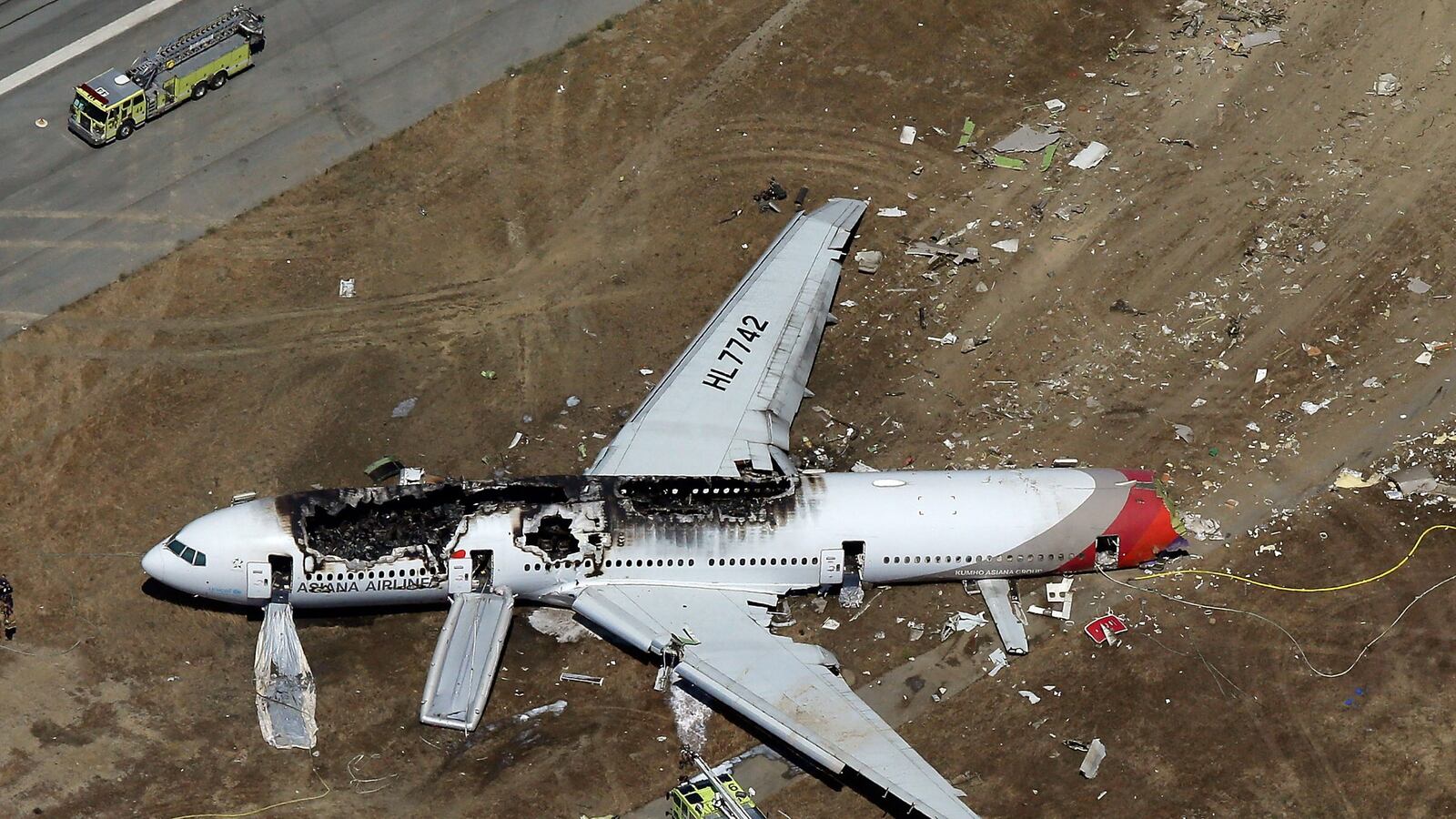The mystery deepens: how did the pilots flying Asiana Airlines flight 214 into San Francisco misjudge their final approach so seriously?

The details of the last few seconds of the flight given by National Transportation Safety Board chairman Deborah Hersman imply a serious lapse of airmanship. The most damning detail is that the Boeing 777 delivered its own signal of distress, what is called a “stick shaker” warning.
That is when the airplane itself senses it is on the threshold of an aerodynamic stall, where the wings lose the capacity to keep it in the air. I have no qualifications as a pilot, but I have flown a 777 in a Boeing simulator and provoked a stick shake. Believe me, it’s salutary. The “stick” is the control column, and it really gets your attention with a vigorous shaking motion.
When a pilot has altitude and provokes a stick shake, the procedure is to power up the engines and put the nose down, to regain speed and stability as fast as possible. When the plane is within seconds of reaching a runway and it happens, it’s too late. The engines take at least four seconds to begin providing more power, and the pilot can’t put the nose down because there is nothing between the plane and the ground.
Getting into that situation when the airplane is in a “dirty” condition, with its landing gear down and the wing flaps fully extended for landing, makes it even harder to recover. Indeed, it’s unconscionable.
The information offered by Chairman Hersman and other sources, including a video exclusively obtained by CNN that shows the 777 crashing, leaves no doubt that well before those final fatal moments the 777 was descending too fast and at the same time losing forward speed. A spokeswoman for Asiana said late Sunday that First Officer Lee Kang-kook, who handled the landing, was in training on the 777 and that Saturday was his first attempt to land the plane at San Francisco International Airport. Captain Lee Jeong-min, who assisted in the landing, had 3,220 hours of experience on the 777.
Attention also has been drawn to the temporary absence at San Francisco of an automatic navigation aid that transmits to pilots whether they are accurately following the assigned glide path to the runway, the shallow sloping line of descent the airplane should follow. But as Chairman Hersman pointed out, the pilots have the security of other systems and instruments to follow the glide path, the most valuable of which should be their own visceral situational awareness.
Thousands of other flights have landed safely without the glide-path aid in all kinds of weather and traffic situations. Flight 214 was coming in on a clear day with absolutely no other challenges than flying competently.
It’s customary among all airlines for captains to allow first officers to make takeoffs and landings to allow them to build their experience, especially when there are no unusual circumstances involved. It should be routine.
But it can go wrong. Earlier this year, a Boeing 737 flown by the Indonesian carrier Lion Air crashed into the sea on final approach to Bali international airport. The investigation revealed that the captain, having disengaged the autopilot, had handed over manual control to a far less experienced first officer, who lost height too fast. In the last seconds, the captain took over, but it was too late. The 737 broke up on impact with the water, but miraculously nobody died.
That was partly because the shallow water cushioned and braked the airplane more gently than if it had hit a runway like the Asiana 777.
Indeed, given how violent the crash-landing of flight 214 was, the passenger survivability of the crash is a testimony to the effort made over the last 20 years to achieve two things: seats that can withstand high impact and protect their occupants, and well-rehearsed evacuation drills. Several potentially deadly forces combined in this accident—an extremely sudden deceleration that pressed passengers forward and, simultaneously, a precipitous downward plunge and impact as the airplane’s tail broke away.
The most serious injuries involve spinal compression, and it’s probable that the worst of these occurred in the rear of the cabin, where the plunging force was at its strongest. Other internal injuries would be caused by the restraining force of the seat belts. The two young Chinese students who were the only fatalities were reportedly seated in the rear, though one of them may have been run over by an emergency vehicle. That 123 of the 291 passengers aboard were able to walk away uninjured is remarkable—though they went through a traumatic experience and may well need counseling in the future.






